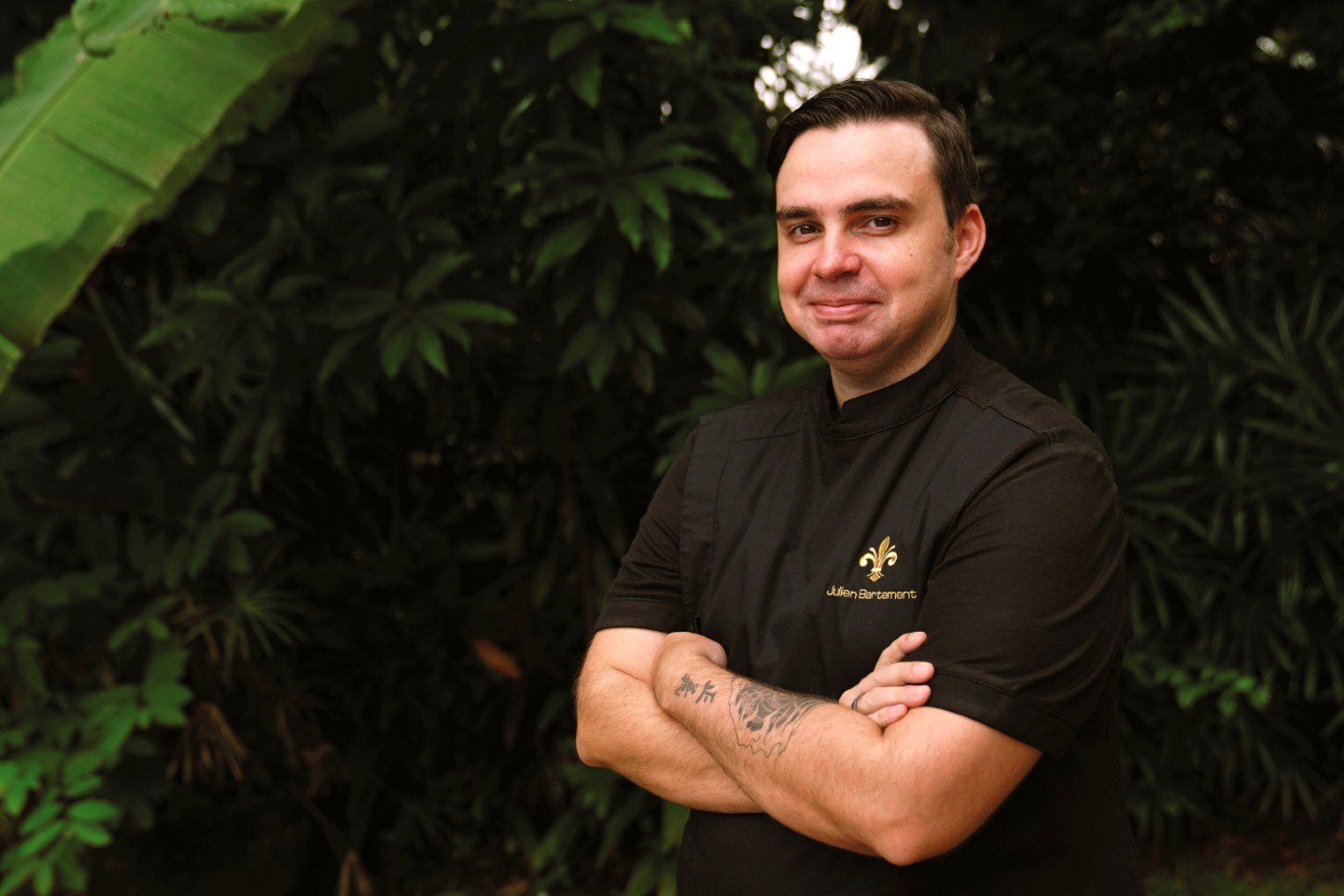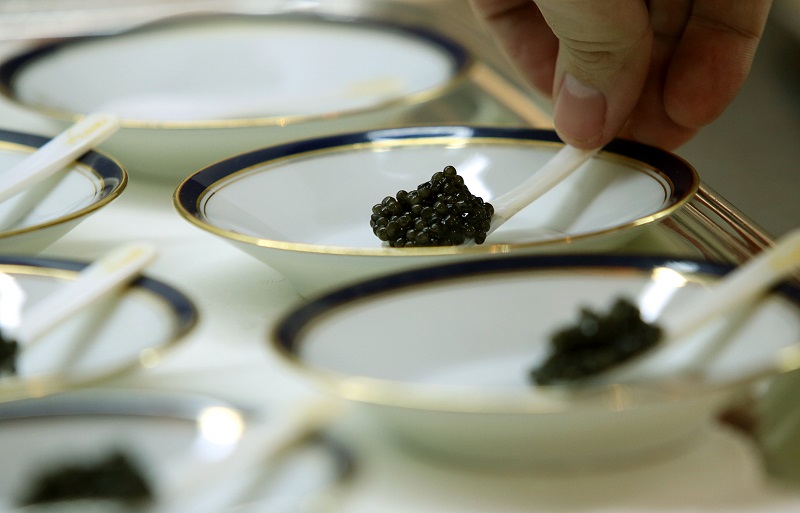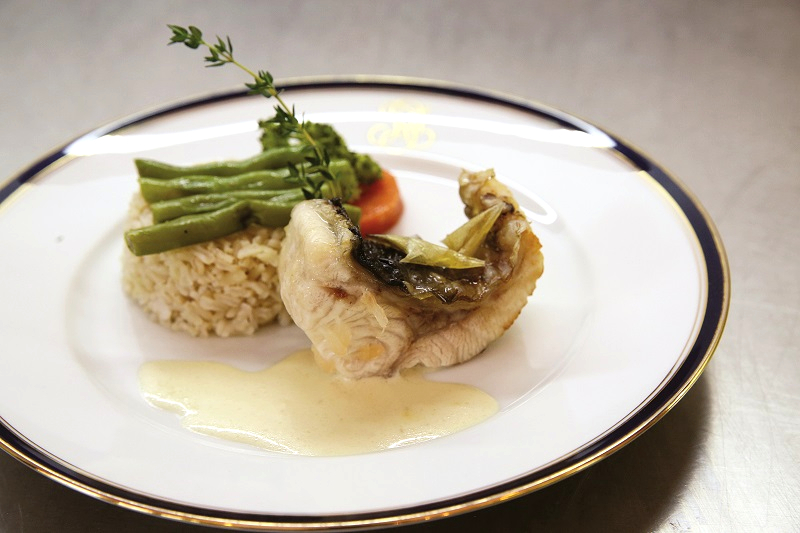
Bartement had trained in some of the most prestigious addresses in the world (Photo: Embassy of France)
An invitation to lunch at the residence of the ambassador of France is not a daily occurrence, and the event was made more intriguing by the promise that this would be an afternoon of “proudly Malaysian French cuisine”. Not fusion, mind you, but a French menu featuring Malaysian ingredients.
“We wanted to showcase the quality of Malaysian agricultural products in the context of French-style cuisine,” said His Excellency Frederic Laplanche in a sunlit antechamber as guests sipped on champagne. “In a recent conversation with some Malaysian friends, I asked what they thought of Kedah rice, they said they preferred the Thai variety. In France, we value local products, especially when we know the producers.
“It is a privilege to live in Malaysia where so many great farmers, breeders and fishermen provide wonderful products. They have a difficult task but it is the most important task in society — to feed us. We are so dependent on them and should support them the best we can. Malaysians can be proud of their agriculture. My request for today is that we talk about local produce and producers, and promote them.”
jb.jpg

The French approach to food is indeed worthy of study. Sustainability is one aspect — the Economist Intelligence Unit’s 2016 Food and Nutrition Sustainability Index cited France as the country leading the way in tackling food wastage, becoming the first nation in the world to penalise supermarkets for throwing away still-edible food. But also notable is the appreciation for wholesome local produce, the conscious championing of tradition and craftsmanship in artisanal products and the significance ascribed to sourcing and traceability.
This attitude not only supports small business holders but also shortens the distance between production and consumption, leading to a lower carbon footprint and fresher produce. Increasing self-sufficiency and reducing reliance on imports are timely in the growing conversation about food security. Quality need not be compromised either, as demonstrated by customers who patronise farmers’ markets for their favourite cheesemaker or travel across town for the best bread.
Malaysians too have such relationships with a preferred butcher or market vendor, which Julien Bartement was eager to bring into play. The Burgundy-born-and-bred chef had trained in some of the most prestigious addresses in the world, including Monte Carlo’s Hotel de Paris. After settling permanently in Malaysia, he leapt at an opportunity to serve as executive chef to the French ambassador in 2017.
The concise menu called upon a melange of French techniques and classic dishes. Before the affair commenced, however, guests were treated to a spoonful of caviar from sturgeon farmed in Tanjung Malim, Perak, by local producer T’lur Caviar.
20191008_peo_french_malaysia_lunch_and_interview_1_sam.jpg

Marketing director Shaun Simon represented the caviar label at the lunch, along with Vanilla Temerloh founder Mohd Feisal Mohd Norawi and Chocolate Concierge founder Ong Ning-Geng. Each had their products incorporated into the menu, which was enjoyed not just by media guests but also Primary Industries Minister Teresa Kok as well as Agriculture and Agro-based Industry Minister Datuk Seri Salahuddin Ayub and his deputy Sim Tze Tzin.
The burst of luxuriant brine from the caviar opened a culinary journey that crossed terrains and waters. The seafood theme continued in the first course proper — a medley of shrimp and langoustine served in a rich bisque made from wild-caught crabs from Sabah.
“I used tiger prawns from Pekan, Pahang, and langoustines from the Sarawak River,” explained Bartement. “The prawns were pan-seared with butter and langoustines roasted, so you have different textures and flavours.”
Silver gravy bowls of extra bisque were warmly received and the few of us with mild shellfish allergy agreed that the dish was worth potential suffering later on. The sweetness of the plump seafood paired well with the intense and savoury broth, wiped clean with bread.
For the main course, empurau from the Rajang River was served in a Tambun pomelo stew with fresh organic vegetables from Cameron Highlands and Genting Highlands and rice from Kedah. The prized freshwater catch, indigenous to Borneo and which can fetch up to RM2,000 per kg, derives its value from its rarity and diet. Wild empurau subsist on select fruits that grow by the riverbanks, which it leaps up to catch. They are renowned for their creamy, fatty flesh and delicate taste.
20191008_peo_french_malaysia_lunch_and_interview_8_sam.jpg

“I’m using a new technique called mijoté moderne, which is a blend of roasting and steaming that keeps the fish really soft and moist,” said the chef. It was cooked with pomelo sacs while its skin and scales were fried separately for crunchy contrast. This created a mouthful of easy natural flavours, with the fish pillowing the bite of vegetables and firm rice. Lunch would have been a healthy affair with this clean dish but for the indulgent final course.
Bartement described dessert as a parade of Malaysian cocoa in a Temerloh vanilla and Johor coffee sauce. “I used traditional French pastry techniques to create different textures — one crumble for crispness and a mousse with a molten centre.” It was all that and more, an unassuming block that yielded immediately to the tines: Chocolate that cracked and crumbled and soaked up the fragrant sauce for a forkful of textures and balanced bitter and sweet notes.
The 14 specially-sourced Malaysian ingredients demonstrated that the bounties of our land and waters have a place in such delicate and distinct dishes. Even in the complex language of French cuisine, our rich vocabulary of ingredients speaks eloquently.
This article first appeared on Nov 11, 2019 in The Edge Malaysia.


